 | Grey Twisted Moth (one synonym : Arhodia modesta Warren, 1904) OENOCHROMINAE, GEOMETRIDAE, GEOMETROIDEA | (donherbisonevans@yahoo.com) and Stella Crossley |
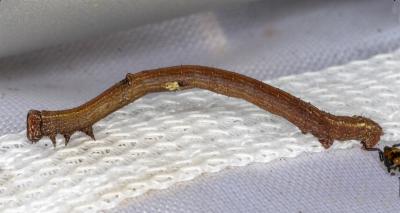
early instar
(Photo: courtesy of
David Akers,
Won Wron, Victoria)
 | Grey Twisted Moth (one synonym : Arhodia modesta Warren, 1904) OENOCHROMINAE, GEOMETRIDAE, GEOMETROIDEA | (donherbisonevans@yahoo.com) and Stella Crossley |

early instar
(Photo: courtesy of
David Akers,
Won Wron, Victoria)
The colour of this caterpillar is basically brown and green. Early instars have faint pale stripes. For food, our caterpillars accepted the leaves of:
initially eating just a surface layer off a leaf, and cleverly attaching their scats to the edge of the leaf. More mature caterpillars ate the whole leaf.
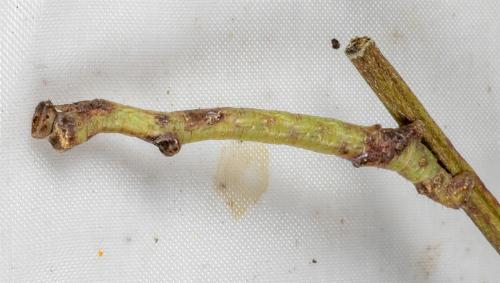
The caterpillar eventually can grow very large for a Geometrid, reaching a length of 7.5 cms. The mature caterpillar has three pairs of dorsal horns: the largest is on the first abdominal segment; a slightly smaller pair is found on the fifth abdominal segment, and the smallest pair is on the eighth abdominal segment. It can look like a stick with buds on.
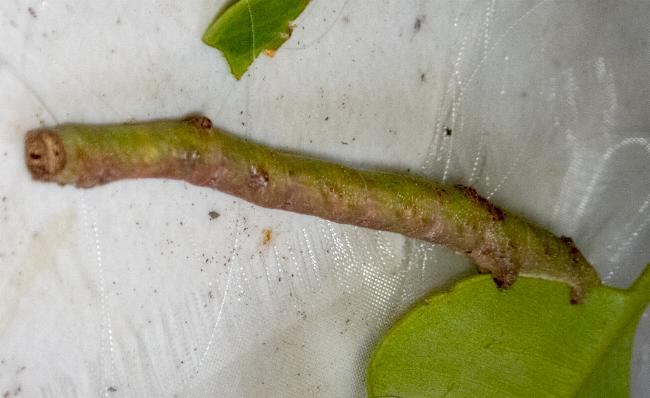
Having only a single pair of ventral prolegs, it walks in a looper fashion, and a common posture is to grasp a twig with its prolegs and claspers, and stick out straight like another twig.
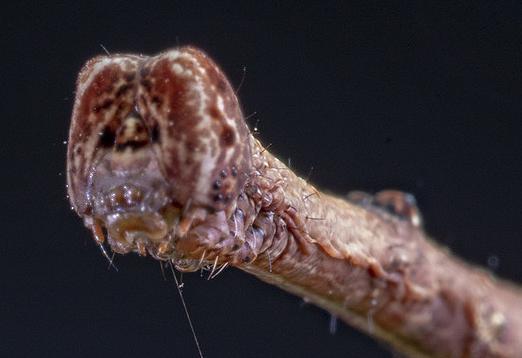
The head has a swollen collar, so looking like the broken end of a twig.
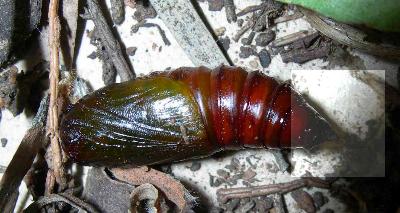
Prior to pupation, the caterpillar contracts slightly in length, and the skin becomes dull in colour and looks rough. The caterpillar crawls into the soil where it pupates. The pupa has a length of about 2 cms.
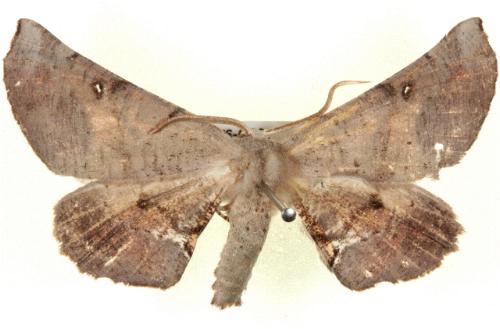
The adult moth is grey brown on top, with variable dark markings, The forewings usually each have three dark marks along the costa, and a tiny black-edged white spot near the middle of the costa. The hindwings also each have a tiny black-edged white spot near the middle, as well as a narrow band of black and white spots along the hind margin.
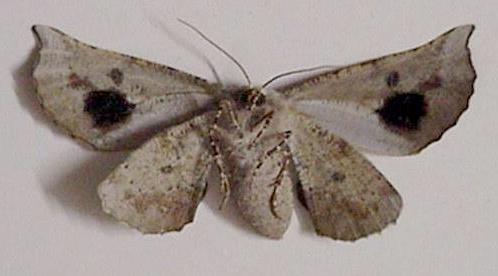
The underside have a similar colour, but each forewing has a very large dark spot and two smaller spots, and each hindwing has a small brown spot. The moths have slightly scalloped wing margins, and a recurved margin at the tips of the forewings. The moths have a wingspan of about 6 cms.
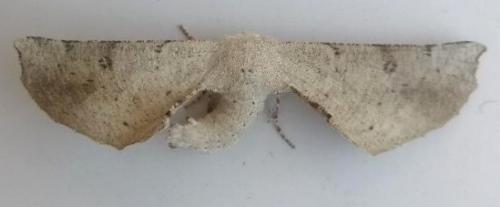
The moth rests with the forewings outspread and curled, and the hindwings tucked underneath them. The moths usually twist the abdomen to one side, the side being arbitrary, sometimes changing the side to which it is twisted.
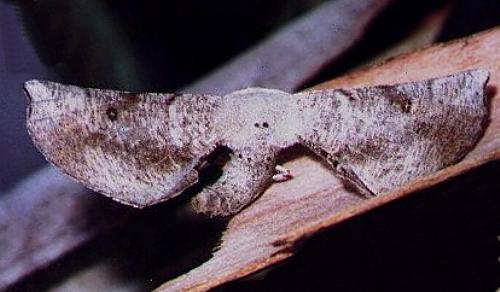
The abdomen is often held twisted even when mating. The photo here shows the female bending its abdomen to the left, and male to the right.
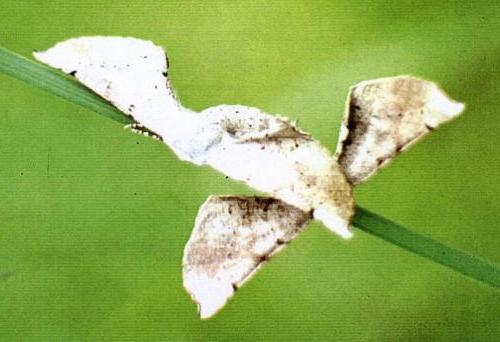
The curved abdomen breaks the visual bilateral symmetry charcteristic of most animals, and makes them hard to recognize as being animals. When we first encountered a female of this species at night, beneath a mercury vapour lamp, we repeatedly overlooked the moth thinking it was a dead leaf.
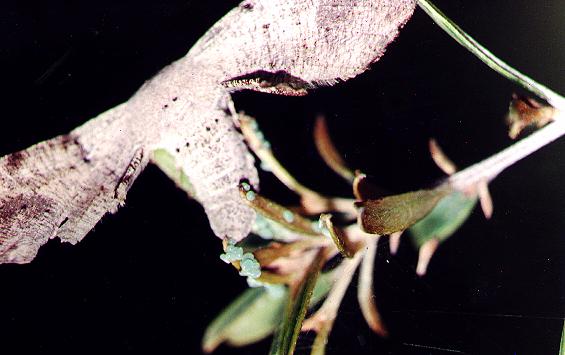
The moth laid many eggs three days later. The eggs are small green-grey oval discs which are slightly thicker at one end. They were glued by one of their flat sides to the surface of a leaf, and often evenly spaced. The eggs hatched five days after laying.
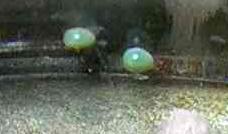
The species has been found in:
Further reading :
Ian F.B. Common,
Moths of Australia,
Melbourne University Press, 1990, fig. 54.1, p. 369.
Pat and Mike Coupar,
Flying Colours,
New South Wales University Press, Sydney 1992, p. 42.
Peter Marriott,
Moths of Victoria: Part 4,
Emeralds and Allies - GEOMETROIDEA (B),
Entomological Society of Victoria, 2012, pp. 12-13.
Francis Walker,
Geometrites,
List of the Specimens of Lepidopterous Insects in the Collection of the British Museum,
Part 21 (1860), p. 279, No. 2.
 caterpillar |  butterflies |  Lepidoptera |  moths |  caterpillar |
(updated 18 June 2013, 27 April 2025)